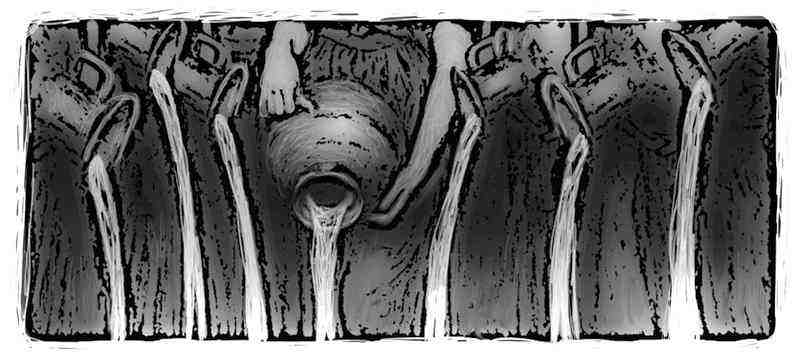
With Dr Yvette Alt Miller
Ian Fleming’s antisemitism and other ways Jews loomed large in the world of 007.
- Bond’s creator was a known racist and anti-Semite.
Ian Fleming wrote the 12 spy novels featuring James Bond, the British secret agent which formed the basis for the successful film franchise. Fleming was a fascinating and complex character. Born in 1908 into an upper-class British family (his father was a Member of Parliament), Fleming was educated in England, German and Switzerland. Before the Second World War, Fleming worked in Moscow as a journalist, then in Britain as a banker. During World War II, Fleming served as a high-ranking intelligence officer in Britain’s Royal Navy.
One of Flemings’s greatest contribution to the Allied victory was his role in planning Operation Goldeneye, a top-secret spy operation aimed at ensuring that Nazi Germany did not invade Spain and Portugal and could not develop capabilities to spy on Britain’s territory in Gibraltar. After retiring from the Royal Navy, Fleming worked for the London Sunday Times, then moved for much of the year to an estate in Jamaica — named Goldeneye — where he wrote many of the Bond novels. He died in 1964.
To modern eyes, the original James Bond novels are relics of a crueller and less politically correct past, replete with shockingly offensive descriptions of women, Black people and other ethnic groups. Fleming’s biographer Matthew Parker observes that “Fleming — and Bond —looked down on pretty much everyone who was not British and perceived people of all colours in terms of negative stereotypes of race and nationality” (quoted in Goldeneye — Where Bond Was Born: Ian Fleming’s Jamaica by Matthew Parker: 2015).
Mordechai Richler, the Canadian Jewish writer, believed that Bond’s nemeses evoked anti-Jewish conspiracy theories that Jews are somehow driven by a superhuman lust for power or greed. Thus, Bond villain Auric Goldfinger says that “The day when we shall have made ourselves the sole possessors of all the gold in the world, the real power will be in our hands.” Sir Hugo Drax, the villain in Fleming’s book Moonraker, says “The surest means of attaining (power) is to have supreme control over all industrial, financial, and commercial operations.” Both these statements — and many others scattered throughout the James Bond novels — seem like the untrue slurs that have for countless generations been baselessly hurled against Jews.
“My boys are crazy about the James Bond movies,” Richler noted. “They identify with 007, as yet unaware that they (as Jews) have been cast as the villains of the dramas.”
- The Bond villain Goldfinger was named after Ian Fleming’s famous Jewish neighbour.
The chilling villain of Fleming’s 1958 novel Goldfinger is Auric Goldfinger. Auric is Latin for Gold and, as his name implies, the character of Goldfinger is obsessed with gold — along with the power that unlimited wealth could bring. Much of the novel describes James Bond thwarting Goldfinger’s plan to steal the gold reserves from Fort Knox in the United States.
- Chamisa under fire over US$120K donation
- Mavhunga puts DeMbare into Chibuku quarterfinals
- Pension funds bet on Cabora Bassa oilfields
- Councils defy govt fire tender directive
Keep Reading
Fleming named this odious character — whose obsession with gold and wealth and power echoes anti-Jewish conspiracy tropes — on his real-life Jewish neighbour in the leafy neighborhood of Hampstead in North London. This real-life Goldfinger was Erno Goldfinger, a noted Hungarian Jewish architect who moved to London in 1934. Ian Fleming seemingly loathed Erno Goldfinger, who threatened to sue Fleming after the book Goldfinger came out.
- Jewish producers — including a war hero — helped bring James Bond to the screen.
After reading the book Goldfinger, the Canadian-born Jewish film and theatre producer Harry Saltzman optioned the rights to make films of the James Bond books. He turned to his friend Wolf Mankowitz, a British Jew who grew up in the old Yiddish-speaking East End of London, for writing help. Mankowitz wrote much of the screenplay for the very first James Bond film, Dr. No.
He was aided by the American Jewish playwright Richard Maibaum. Maibaum was already well-known for his Broadway plays, including the early anti-Nazi play Birthright, produced in 1933. Maibaum helped in writing Dr. No, and then continued to help write nearly a dozen other Bond films.
Journalist Seth Rogovoy explains that “More than anyone, perhaps even Fleming, Maibaum can be said to have created and sustained the mythical icon of Bond.” Jewish actor Joseph Wiseman played the ghoulish Dr. No, setting the stage for James Bond villains to be cartoonishly cruel and larger than life.
Perhaps nobody was as instrumental in creating the mystique of James Bond in the movies than a real-life war hero, Sir Ken Adams (born Klaus Hugo Adam in 1921). Adams was fascinated with art and design from a young age. His Jewish family fled Germany in 1934 after Hitler rose to power. When World War II broke out, 18-year-old Ken Adams was still a German citizen and thus not eligible to join the British army – yet he was determined to fight.
Adams joined the Pioneer Corps, the only branch of Britain’s service in which German-born men could enlist. He asked to fight for the Royal Air Force and became a RAF fighter pilot — only one of two German citizens to be allowed to. He was under particular danger: if he’d been shot down and was discovered to by the Nazis to be a Jew from Germany, Adams would have faced certain torture or death.
After the war, Adams became an art director in cinema. He joined the James Bond project in 1962 with Dr. No. It was Adams who invented James Bond’s bulletproof Aston Martin car with its array of gadgets, including “Browning heavy machine guns, rams, tyre shredders, revolving number plates, smokescreen and oil slick projectors, a homing tractor, and an ejector seat,” accroding to Adams’ obituary in The Guardian. One of Adams’ most memorable design features was the simplest: the tarantula that is dispatched to kill James Bond in Dr. No. “I think it is one of my favorite sets, because it is so simple and theatrical,” Adams explained. “I think I had 450 pounds left in the budget. So I really had to come up with something very quickly that was very easy to construct and at the same time create a very important effect.”
- Goldfinger was temporarily banned in Israel.
The movie Goldfinger was a hit around the world when it first came out in 1964, and Israel was no exception. Over a quarter of a million Israelis watched the film in its first six weeks in the cinemas. The film’s popularity was despite the fact that the German actor who played the movie’s arch enemy Auric Goldfinger, a beefy man named Gert Frobe, didn’t speak English. An English actor dubbed most of Frobe’s lines.
Soon after the movie came out, the British Daily Mail newspaper ran a story titled “Of course I was a Nazi!” An Israeli journalist had asked Frobe what he’d done during World War II, and Frobe admitted that he’d joined the Nazi party in 1929 at the age of 16 because he was attracted to their policies. In 1956, Israel had passed a law banning any films that included wartime Nazis. Goldfinger stopped being played in Israel’s cinemas.
Over the next weeks, more of the story came out. Even though he was a member of the Nazi party, Frobe had saved the life of a Jewish woman and her family during the Holocaust. He explained that he and the woman were both assigned to work in a hospital in Vienna in 1941. Realizing that she was in danger, he hid both her and her family in his apartment for the duration of the war. “The fact that I helped them was proved after the war before I was allowed to start work again,” he told The New York Times in December 1965.
Soon, a man named Mario Blumenau went to the Israeli embassy in Vienna that his life and his mother’s life had likely been saved by Mr. Frobe. Within months, Israel allowed Goldfinger to resume being shown in Israel. It was a case of truth being much more dramatic than the capers of the fictional spy thriller on the screen.
- James Bond might have been modeled on a real-life Jewish spy.
James Bond might have been modelled on a real British Jewish spy, Sidney Reilly, who bore some uncanny similarities to Ian Fleming’s creation. (As a former high-level intelligence official, Ian Fleming surely would have known about Sidney Reilly, who is sometimes called the most successful British spy of all time.)
Born Shlomo (some say Sigmund) Rosenblum in 1873 in Ukraine, Sidney Reilly was recruited by the Special Intelligence Service (SIS), the forerunner of Britain’s famed MI6 intelligence service, and given the number ST1 – much as James Bond is known by his handlers as 007.
A mysterious figure who spoke seven languages, Reilly was recruited to help Britain battle Bolsheviks in the early 1900s. Known as the “Ace of Spies,” Reilly’s heroic actions seems like something out of a James Bond film. One notable adventure came in 1905, after an Australian miner named William D’Arcy discovered huge oil fields in the Persian Basin. D’Arcy needed a huge investment to exploit the oil field and arranged a meeting with members of the French Rothschilds family to discuss financing the project.
As D’Arcy and the Rothchilds conferred on the yacht, a priest suddenly barged in, asking for money for Catholic charity. In the course of the discussion, this “priest” managed to convince D’Arcy that the British could give him a better deal in exploiting the oil field. The priest was none other than Sidney Reilly, acting on orders from the SIS, and the eventual company that D’Arcy and the UK Government formed eventually became British Petroleum.
During World War I, Reilly continued working for the British, infiltrating German lines on several occasions. He told people that he even attended a General Staff meeting during the war at which Kaiser William II was present. Like James Bond, Reilly was an inveterate gambler, womanizer and collector of high-end antiques. He married several times and went under an array of pseudonyms. He was finally captured in Russia in 1925 where he’d likely been sent by the British government to further their anti-Communist activities there, and was executed near Moscow.










